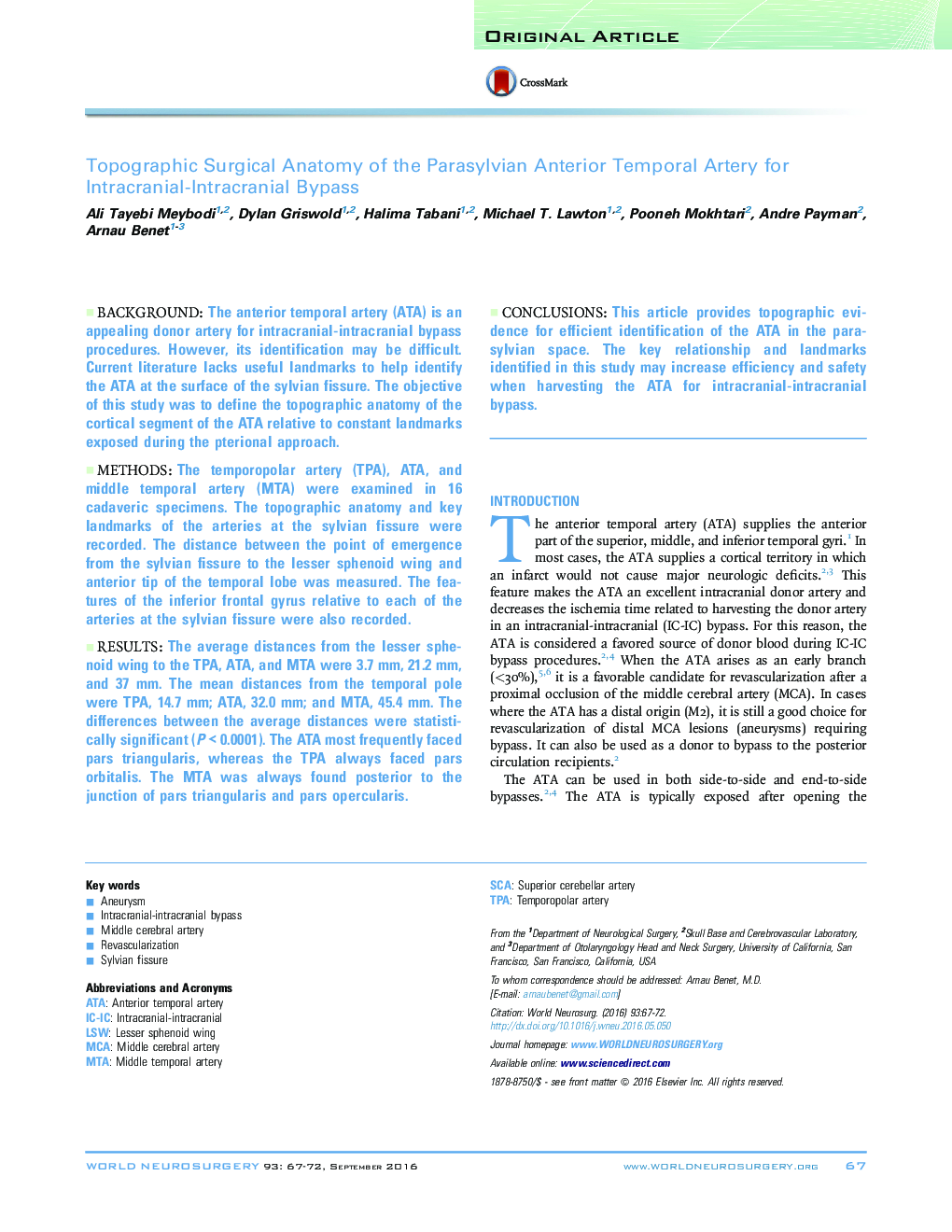| Article ID | Journal | Published Year | Pages | File Type |
|---|---|---|---|---|
| 6043179 | World Neurosurgery | 2016 | 6 Pages |
BackgroundThe anterior temporal artery (ATA) is an appealing donor artery for intracranial-intracranial bypass procedures. However, its identification may be difficult. Current literature lacks useful landmarks to help identify the ATA at the surface of the sylvian fissure. The objective of this study was to define the topographic anatomy of the cortical segment of the ATA relative to constant landmarks exposed during the pterional approach.MethodsThe temporopolar artery (TPA), ATA, and middle temporal artery (MTA) were examined in 16 cadaveric specimens. The topographic anatomy and key landmarks of the arteries at the sylvian fissure were recorded. The distance between the point of emergence from the sylvian fissure to the lesser sphenoid wing and anterior tip of the temporal lobe was measured. The features of the inferior frontal gyrus relative to each of the arteries at the sylvian fissure were also recorded.ResultsThe average distances from the lesser sphenoid wing to the TPA, ATA, and MTA were 3.7 mm, 21.2 mm, and 37 mm. The mean distances from the temporal pole were TPA, 14.7 mm; ATA, 32.0 mm; and MTA, 45.4 mm. The differences between the average distances were statistically significant (P < 0.0001). The ATA most frequently faced pars triangularis, whereas the TPA always faced pars orbitalis. The MTA was always found posterior to the junction of pars triangularis and pars opercularis.ConclusionsThis article provides topographic evidence for efficient identification of the ATA in the parasylvian space. The key relationship and landmarks identified in this study may increase efficiency and safety when harvesting the ATA for intracranial-intracranial bypass.
